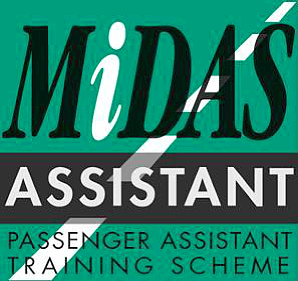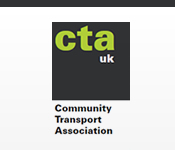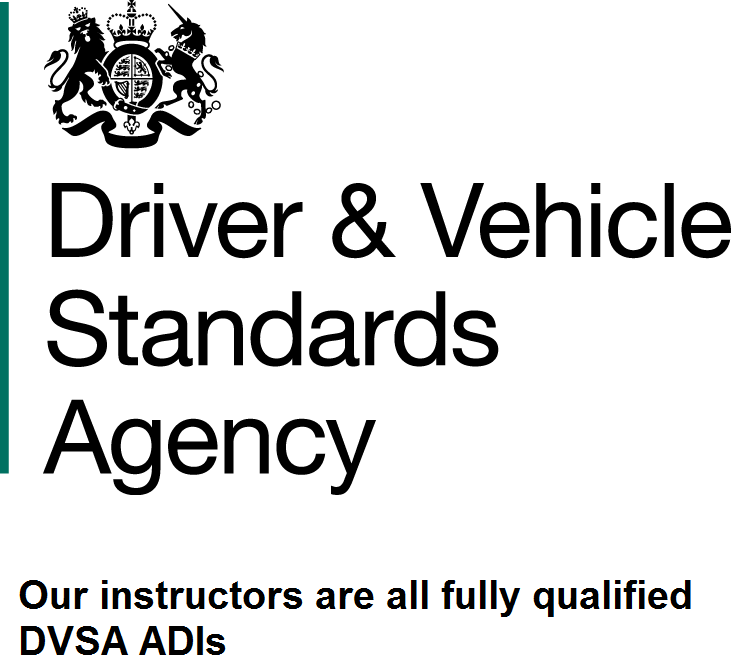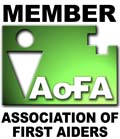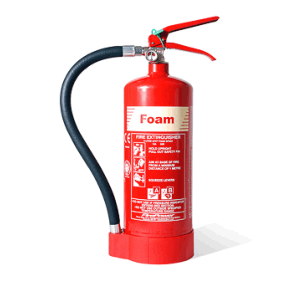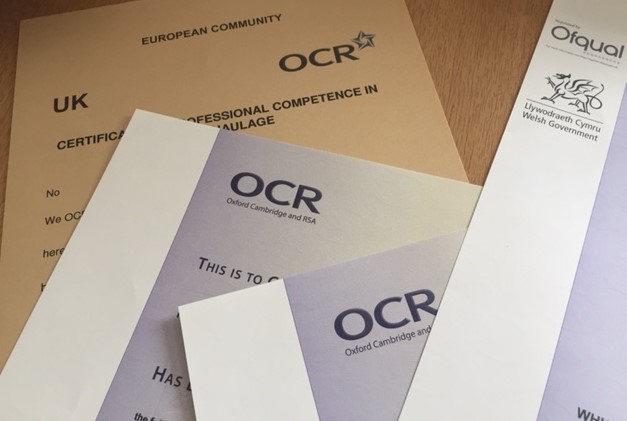Transport Manager Certificate of Professional Competence (CPC)
TwC-Training Services Founder/Owner is an Intl TM CPC Qualification Holder
Are you looking to apply for the Operator (O-Licence)! If so, we have detailed the process from A to Z, by the end of reading this web page and the included links you will be able to apply for your O-Licence with ease and confidence.
TwC-Training Services founder is an Intl TM CPC Qualification Holder and will be happy to assist you in your O-licence Application Process.
We are offering a very competitive prices and you can comfortably apply for your O-Licence with us knowing that we will beat any quote and deliver excellent and great customer service.
Please Consider The Following When Applying For The O-Licence:
• Do you have enough knowledge of drivers’ hours ?
• Do you have proof of ‘financial standing’ ?
• What type of O-Licence do you require?
• How many licences do you require?
• Why do you require an operator’s licence?
• Have you got somewhere suitable to park your vehicles?
How the operator (O-License) application works?
To obtain an O-License you will need to read and complete the following steps:
How to Apply for goods vehicle operator’s license (O-License)?
To successfully apply for the (O-License) you will need to complete the (O-License) Application Process Steps (below); Please view the steps required below and follow, you will need to action and complete accordingly:
(Some steps are self-service, if you need any assistance to complete these steps please contact us on: +44 8007723202)
| 1- Provide original statements of your bank accounts for the last 3 months, contact your bank to obtain, (see: requirements) |
| 2- Locate an operating center (This is parking for your vehicles when they are not being used) |
| 3- Locate a good maintenance provider (see: requirements) and both yourself and the maintenance provider to sign the provisional (see: contract). Please contact us if you require any assistant locating a good maintenance provider. |
| 4- Publish a (Public Notice) in a the local newspaper |
| 5- Download to obtain and fill in the (GV79) application form |
| 6- Include the application (O-License Fee) (Credit Card, Cheque, etc…) and send please |
| 7- Send us and email with your details and I will fill in the (TM1 Form) for the (Transport Manager) |
| 8- Want to fast track your O-liecense application fill in the interim application form (INT1) and tell us (Optional) |
| 9- No vehicle yet! Get an email/letter from a truck hiring company indicating that they would rent a vehicles (Optional) |
| 10- Meet us to sign and send the application forms to the (Traffic Commissioner) with our original (CPC) License included. |
Managing your Operator’s License is a (Self Service System):
Please view the actions required below and follow the steps, you will need to action and complete accordingly:
(Below actions are self-service, if you need any assistance to complete these actions please do not hesitate to contact us)| Action Required: | Link: |
|---|---|
| Manage your commercial vehicle O-License on-line: |
https://www.gov.uk/manage-vehicle-operator-licence |
| Find a Local Bus Registration: | https://www.gov.uk/find-local-bus-services |
| Find a Lorry and Bus Operator: | https://www.gov.uk/find-vehicle-operators |
| The Vehicle operator local authority in-box: | https://www.gov.uk/guidance/check-bus-service-registrations-as-a-council-or-transport-authority |
| Operator licensing partner- self service: | https://www.gov.uk/guidance/check-vehicle-operator-licences-as-an-enforcement-body |
| The vehicle operator license applications check: | https://www.gov.uk/check-vehicle-operator-licence-applications |
Own Safety Inspection and Maintenance Facilities:
| – Safe place for work
– Appropriate equipment to fleet – Suitable inspection facility: under-vehicle – Suitable inspection facility: under-vehicle – Suitable inspection facility: under-vehicle – Suitable lighting – Accessible brake test equipment – Accessible headlamp test equipment – Available steam under-vehicle washing area |
If for an operator fails to maintain vehicles in a safe and roadworthy condition, the Traffic Commissioner may consider regulatory action
The following link is to the DVSA Guide To Maintaining Road worthiness: Maintaining Road Worthiness (PDF)
Attending the DVSA Seminar:
This is a must to attend as it is an obligation of your Operators License, failing to attend one will result in you receiving an enforcement visit letter (as shown below), please make sure you attend the seminar when offered:
(DVSA Seminar Attending Failure Enforcement Visit Letter:)
Dear Sir/Madame:
I have been requested to visit your company and carry out an enforcement visit as you have failed to attend a seminar offered to you. It is an obligation of your Operators License that you attend one. I will also be carrying our a DVSA systems check. I have scheduled a visit to: – The above address for 09:30 hours on Friday 4th November 2016. Please arrange for all documentation and records to be available at this address to enable me to check the systems on the attached list. Please contact me if this is not convenient.
This is a final request letter and as the visit has been requested I am obliged to inform you that failure to act upon this letter, will result in the details being notified to the Office of the Traffic Commissioner.
Yours faithfully
[signature]
[name]
Traffic Examiner
List of questions to be asked during an operator visit:
A. Scheduling/planning of driver’s journeys/duties.
B. System for issue of print rolls and record sheets/books, return of record sheets and downloading of data from driver cards and digital tachographs.
C. Demonstrate frequent checking of record sheets/books and downloaded data (including agency drivers) by company or 3rd party
D. Evidence of action on infringements (i.e. disciplinary procedures re. warnings leading to dismissal).
E. Systems for ensuring compliance with the Working Time Directive (DfT – Road Transport Working Time Guidance).
F. Adequate storage of record sheets, downloaded data and print-outs (and reasons for print-outs), including WTD records.
G. Agency drivers.
H(i). Initial training for new recruits re. Drivers’ hours/record keeping regulations for both analogue and digital.
H(ii). Refresher training (e.g. following non-compliance of Driver’s Hours Regulations).
I. Records of Driver CPC held.
J. Driver CPC training – who provides the training.
K. Loading techniques (re. Safety and Weight Distribution) to demonstrate clear policy or procedure.
L. Hazardous goods training (if required).
M. Driver licence checks at regular periods (e.g. every 6 months).
N. Criminal records check (PSV only).
O. Plating and Testing (i.e. All test certificates available, in date and monitoring system for re-tests).
P. Insurance (i.e. All vehicles fully insured re. type of use).
Q. Vehicle Excise Licence (i.e. All vehicles licensed and system in place for ensuring renewal).
R. Tachograph/speed limiter functioning.
S. Operator licence and identity discs (see the Guide to Operators GV74 for HGVs; PSV437 for PSVs).
T. Operating Centre (see the Guide to Operators GV74 for HGVs; PSV437 for PSVs).
Records to be kept by operators:
The DVSA and the Traffic Commissioner require that records must be kept for each vehicle and each driver for a minimum of 15 months, the records required to be kept include:
| – The Haulage contracts with your clients
– Accounting records for as long as (HMRC) – The Vehicle repair and parts replacement receipts and reports – The Drivers’ Hours downloaded and obtained from the (tacho-graphs) – 6-weekly vehicle safety inspection and maintenance reports from your maintenance provider. – The Notices of any prohibitions, prosecutions, violations, and convictions related to the operator or the drivers. – Daily vehicle (walk-around ) inspection reports by the drivers – Regardless to if no defects were found (write “None”) |
Please let us know if you require help into How to safely keep your operators records!
Safe Record Keeping and effective Compliance:
To fulfill our responsibilities and obligations to each-other and also to the (Traffic Commissioner) alike, below are very effective steps and methods to ensure safe records keeping and auditing:
Please view the steps required below and follow, you will need to action and complete accordingly:
(Some steps are self-service, if you need any assistance to complete these steps please contact us)
| – Tachograph Records: |
|---|
| The Tachographs are record and information about driving time, speed and distance. They’re used to make sure drivers and employers follow the rules and compliance, we highly advice using a company called Tachomaster: http://tachomaster.co.uk you can also visit their FAQ’s web page at tachomaster.co.uk/faq to begin to understand how it works. When you upload your tacho records to their website you can either give us the access directly to your Tachograph and Operators’ Hours records reports on their website or, you may generate (PDF OR Word) documents with your Tachograph and Operators’ Hours records reports attached and email them to us.
We can provide you with samples for such document with driver’s hours. The cost is £1 per week per driver. When you sign up, you get 28 days free so you can test drive the system. |
| – Maintenance Records, and vehicle safety inspections: |
| The Maintenance records, including the daily walk-round checks and 6-weekly vehicle safety inspections. All other records can be scanned and uploaded to be kept safe and easily accessible on-line cloud based server (i.e Google Drive, One Drive, Drop Box) we use (Google Drive Cloud Storage) and we recommend using it you will get 30gb Free storage too, to get the (Google Drive Cloud Storage) you will need a gmail account which includes the (Google Drive Cloud Storage) account, if you haven’e got one you can sign up it’s free and will take few minutes. You can then create separate folders for each type of Maintenance and Safety Records inside (Google Drive Cloud Storage) account and then give us access to the folders that we need to be able to view them, we recommend naming your files in the format: dd-MM-yyyy-description.pdf, this will help to sort files by date. All Maintenance records must be kept for a minimum of 15 months.
We recommend that you install the (Google Drive Cloud Storage) on your computer. You can also use their web version without installing the app. DVSA advises the records sheet for 6-weekly safety vehicle inspections. Your maintenance provider may have a similar form. Notice where it says “Write NIL here if no defects found” at the bottom. Even if no defects are found, that sheet should be filled in and kept anyway with “NIL” written in that square. (Please let us know if you require any assistants with Record Keeping and Vehicle Maintenance) |
| – Maintenance Planner (AKA Specimen Calendar) |
| when your next maintenance inspection is due for each vehicle, you are required to have an effective scheduling system in place so that you know and don’t forget As an example: DVSA provides a (Specimen Planner) as 5 on page 45 of the Guide to Maintaining Road worthiness. You can use that page. |
| – Parking your vehicles: |
| Please be advised that it’s “very” illegal to park unauthorized vehicles at your operating center as well as to regularly park your vehicles at unauthorized parking locations, even at your clients’ premises. |
Operator Compliance Risk Score (OCRS):
Please read the information below, it will help you better understand how the Operator Compliance Risk Score (OCRS) system:
if you need any help understanding how the (OCRS) system works please contact us(OCRS) has been around for a while now, but how does it affect operators:
1. Overview:
OCRS (Operator Compliance Risk Score) is created and used by VOSA to calculate the chances of an Operator not being compliant with Operator Licensing law and legislation. If a vehicle operator, drivers might be stopped at the roadside by the police or the (DVSA) for vehicle inspections. The purpose of OCRS is to enable VOSA officials to focus their efforts on Operators who are less likely to be operating within legislation, DVSA use the Operator Compliance Risk Score (OCRS) system to decide which vehicles should be inspected.
2. How it is used:
The Operator Compliance Risk Score (OCRS) is based on data collected by DVSA (3-year rolling period). it’s taken From annual tests, roadside inspections and inspections at operators’ premises.
Here is the scoring points:
1- Traffic Roadside: Data is collected from inspections and prosecutions (eg for drivers’ hours and tachograph offences, weighing checks)
2- Roadworthiness: Data comes from vehicle tests (first tests, subsequent annual tests); ‘vehicle encounters’ (fleet check inspections at operator premises, roadside inspections)
The more serious the defect or infringement, the more points.
You’ll be given a score, which will be shown as R (red – highest risk), A (amber – medium risk) or G (green – lowest risk).
You may check your OCRS score, view test histories and roadside check reports online.
Operators outside Great Britain:
DVSA has a non-GB OCRS system for operators based outside Great Britain. It’s based on data captured at the roadside – this is because there is no annual test or prosecution data available.
3. How your score can affect:
DVSA calls these ‘encounters’. Your score could change if you:
- A ‘clear encounter’ – example: you pass an inspection successfully (positive effect on your score)
- A new offense or a defect recorded against you at inspection (negative effect on your score)
Previous encounters
Your score also changes as old encounters that previously counted towards your score no longer count once they’re not in the OCRS calculation period.
Trigger events
These are serious problems that will send you straight into the red score band for a set period of time.
Once this time is up, your score returns to whatever your base score is at the time. Your base score is your OCRS without the trigger taken into account.
There’s a list of offences that can send your score straight to red in the guidance on the OCRS system.
Year weightings
The impact of an offence or defect decreases over the 3-year time period.
For the first 12 months after the offence or defect, its score stays the same. After 12 months it falls by a quarter and then it’s halved in the final 12 months.
Other changes
There are a number of ‘parameters’ that feed into your OCRS. DVSA sets these and can change them at any time – this has an impact on your score:
- Overloaded
- Dangerous Goods
- prosecutions
- Unlicensed
- time weightings
- Unsafe Vehicle
- trigger events and time periods
More info please see: guidance on the OCRS system.
How long does it take to get an O-Licence?
Applying for an Operators License is not a simple this is why we are here to help in which we apply for the license on your behalf. We find that it can take VOSA up to 10-13 weeks from the point of submission to process an application. Other factors include the level of work that the VOSA caseworkers are dealing with at the time and how straight forward your application is to process.
Maximum time according to regulations is 9 weeks. Actual time depends on the complexity of the application and may take from 6 weeks to 3 months.
How to Obtain a Transport Manager CPC in Road Haulage.
What is a Transport Manager CPC in Road Haulage.
Applicants for a Goods Vehicle Operator’s Licence must show that they are ‘professionally competent’ or that they employ a transport manager who meets the requirements. Persons will be considered ‘professionally competent’ by passing the examination for the Certificate of Professional Competence (CPC) conducted by OCR Examinations on behalf of the Department for Transport (DfT).
If you choose to obtain your own CPC instead of hiring me as your Transport Manager, you will need to pass an exam administered by OCR. The exam is held 4 times a year: in March, June, September, and December. It consists of 2 parts:
- Multiple choice (2 hours 15 minutes).
- Case Studies (2 hours 15 minutes).
Most of the information related to the OCR exam is available here. There, you will find sample Multiple Choice questions under “Assessment materials” and sample Case Study exams under “Past papers”. Answers and analysis of past Case Study exams are available under “Examiner reports”. A complete syllabus for the exam is available here.
Here’s one example (more are available here):
- Case Study Exam – Description – March 2016
- Case Study Exam – Questions – March 2016
- Case Study Exam – Answers and Examiner Report – March 2016
You can buy self-study materials here. That pack is about 4-5cm thick, and it’s a stack of A4 sheets of paper printed on both sides. You are allowed to bring any paper materials to the Case Study part of the exam.
This book can help you in preparation for the Multiple Choice part of the exam, but it has many errors and many parts of it are badly outdated. Still, it is the only book of this type available so it’s better than nothing.
Sample Public Notice.
You can use the text below for your newspaper notice or, alternatively, you can download and fill in GV79A also called “Annex A: advertisement”.
Your notice has to be published in a newspaper that is available in the area where your operating centre is located. An advert in a classified section under “public notices” will be enough, there’s no need to publish a more expensive display ad. You will need to submit the whole newspaper page where your ad is published with your application. The notice has to be published within 21 days before or after the date of your application. The following is a sample newspaper ad:
SAMPLE ADVERT WORDING:
Goods Vehicle Operators License
Your Transport Services Ltd of 10 Registered Street, Town, AB1 2CD is applying to use 15 Industrial Road, City, EF3 4GH as an operating centre for 3 vehicles and 4 trailers.
Owners or occupiers of land (including buildings) near the operating centre who believe that their use or enjoyment of that land would be affected, should make written representations to the Traffic Commissioner at Hillcrest House, 386 Harehills Lane, Leeds, LS9 6NF stating their reasons within 21 days of this notice.
Representers must at the same time send a copy of their representation to the applicant at the address given at the top of this notice. A guide to making representations is available from the traffic commissioners office.
If you have any query prior to your o-License or the self-service steps, simply contact us:
External (Part-Time) Transport Manager’s Job and Responsibilities:
An external transport manager can only work for a maximum of 4 operators with a combined total fleet of 50 authorised vehicles. Traffic Commissioners understand that various transport manager functions are often delivered by a number of individuals acting within a team. The nominated transport manager’s job is to manage the delivery of those functions as the transport manager retains ultimate responsibility. The following is a non-exhaustive list of the types of activity which might be expected of a transport manager:
- to manage, audit and review compliance systems to ensure that they are effective
- to review any shortcomings such as prohibitions and/or annual test failures
- to ensure that relevant changes are notified in accordance with operator licence requirements
- to keep up to date on relevant changes in standards and legislation
- to ensure that drivers hold the appropriate licence for the vehicle they are driving and a valid driver CPC qualification (DQC)
- to ensure that all records are kept for at least the minimum required periods
- to ensure compliance with the driving hours rules
- to ensure that vehicles and trailers are kept in a fit and roadworthy condition
- to ensure that safety inspections and other statutory testing are carried out within the notified O-licence maintenance intervals
This is what form TM1 says about Transport Manager’s responsibilities:
- The making of arrangements to ensure that drivers comply with drivers’ hours and tachograph rules and with speed limits;
- The making of arrangements to ensure that the vehicles are maintained properly, including the inspection of vehicles at the appropriate time and the action tak en to remedy defects found;
- The reporting and recording of vehicle defects by drivers;
- The method of compilation and the accuracy of all records, which must be kept for a period of not less than 15 months;
- The making of arrangements to ensur e that the vehicle/s are not overloaded;
- Ensuring that authorised vehicles will be kept at the authorised o perating centre(s) when not in use;
- Where appropriate, notifying the relevant traffic commissioner (in writing) of all prosecutions and convictions concerning the operator, the drivers and me within 28 days of the court hearing;
- Notifying the relevant traffic commissioner of my resignation;
- Any role that I have in:
- Verifying contracts and documents;
- Basic accounting;
- Any other role in safety procedures.
Financial Requirements to Apply for an O-Licence:
The requirements for a standard national and international licence (not restricted) demand that the applicant has sufficient funds to start up and run the business properly. As well as assets such as vehicles and premises, there must be enough working capital (such as cash, loan facilities or other assets which can quickly be turned into cash) to cover all the expenses which are likely to arise before any money is earned to meet them.
Applicants for standard national and international licences (not restricted) must show that they have available reserves of £7,000 for the first vehicle and £3,900 for each subsequent vehicle authorised. The word “authorised” is important. Operators must have these reserves for both vehicles in their possession and those on the margin.
Your available loans, credit cards and overdraft facilities also count towards these amounts, so it’s not only cash on your account. Money and credit available to your partners also count for limited companies and partnerships.
When you apply, these amounts must have been available to you during a 28 day period, the last date of which must not be more than 2 months from the date of receipt of the application.
This is how much you need to have for the number of vehicles you are applying for:
| 1 vehicle = £7,000 |
| 2 vehicles = £10,900 |
| 3 vehicles = £14,800 |
| 4 vehicles = £18,700 |
| 5 vehicles = £22,600 |
| 6 vehicles = £26,500 |
| 7 vehicles = £30,400 |
| 8 vehicles = £34,300 |
| 9 vehicles = £38,200 |
| 10 vehicles = £42,100 |
Changing a Transport Manager:
If the Transport Manager specified on a standard O-licence leaves or you wish to change your Transport Manager for any other reason, then the Traffic Commissioner must be informed, via the Central Licensing Office, using the form GV80A.
The Traffic Commissioner need not revoke the license and may allow a reasonable period of time for the operator to find a replacement person who is professionally competent The maximum time which may be allowed by the Traffic Commissioner is 6 months. This may be extended to 9 months at the Commissioner’s discretion.
When a new transport manager is appointed (in many cases at the same time as you send your GV80A), a completed form TM1 must be submitted containing details of the professionally competent person and the signed declaration, together with original certificates confirming professional competence.
How to find a suitable operating centre:
The operating centre is the term used in the regulations to describe the location of where the vehicle or vehicles are parked when not in use. The Traffic Commissioner will need to be satisfied that your operating centre(s) are suitable – for example, that they will be big enough, with safe access, and in an environmentally acceptable location. If you do not own the operating centre you may be asked to provide evidence that you are entitled to use it.
The best way to find an operating centre is through the Traffic Commissioner’s Operator Search website here. Search for transport companies by “Town name(s)” in which you’d like to base your company (pick a town that has a good number of industrial estates). Then, look up the addresses of their operating centres. Contact them or the yard owners and ask if you can use their yard as your operating center.
Other websites where you can search for or post a wanted ad for an operating center:
| gumtree.com | trucknetuk.com | hgvparking.com | thefarmingforum.co.uk |
|---|
Operating Centres and Traffic Areas:
An ‘O’ licence must be obtained in each Traffic Are in which there is an operating centre. UK legislation defines an operating centre as the base or centre where the vehicle is normally kept. “Normally kept” means the place where the vehicle is usually parked when not in use. This might not always be the same as the transport company’s depot, as often vehicles are regularly parked at a customer’s premises or even at the driver’s house. In such cases then the customer’s premises or the driver’s house would constitute the operating centre and details must be included on the ‘O’ licence application.
An operator can only hold one ‘O’ licence in each Traffic Areas.
If an operator has operating centres in several different locations within the same Traffic Area, then only one ‘O’ licence will be required. Alternatively, if there are several operating centres each in different Traffic Areas, then a separate ‘O’ licence to cover vehicles in each Traffic Area will be necessary. Organisations holding existing ‘O’ licences or wishing to apply for ‘O’ licences in more than one Traffic Area can be allocated a Lead Traffic Commissioner who will deal with all application and compliance issues.
Traffic Commissioners:
O-licensing is the responsibility of the Department for Transport (DfT). The UK is dividend into eight Traffic Areas and each of the areas is looked after by a Traffic Commissioner. Initially each Traffic Area had its own Commissioner and Traffic Area Office but, in an attempt to reduce costs, some Commissioners now look after two areas. The eight current Traffic Areas are:
- Scottish
- North Western
- North Eastern
- Eastern
- West Midlands
- Welsh
- Western
- South Eastern and Metropolitan
Much of the basic administration of O-Licensing is conducted on behalf of the Traffic Commissioners by the Driver and Vehicle Standards Agency (DVSA) Central Licensing Office (CLO) based in Leeds.
Operator Compliance Risk Score (OCRS):
Please read the information below, it will help you better understand how the Operator Compliance Risk Score (OCRS) system:
if you need any assistance to understand how the (OCRS) system works please do not hesitate to contact usInterim Licenses:
Although a license application must be made at least nine weeks before the chosen operative date, it is possible, in some circumstances, for the Traffic Commissioner to issue an interim license. Following submission of the GV79, applicants may complete a separate form INT1 to indicate the need for an interim license and giving reasons why the issue of an interim is being requested. The Traffic Commissioner may grant the interim license which is subject to a special fee. The interim license will remain in force until the full application is considered. It is important to remember that the issue of an interim license is no guarantee a full license will subsequently be issued.
The form INT1 to apply for an interim licence can be downloaded from here.
The current fee for an interim license is £68.
Summary of tachograph records requirements:
- driver cards to be downloaded at least every 28 days
- lost driver cards to be reported to DVLA within 7 days
- maximum days of driving without a replacement driver card = 15 calendar days; in other words, if driver has forgotten his card at home – he can’t drive without it; if he’s lost it – he can drive for 15 days until he gets a replacement.
- drivers must take VU printouts at the beginning and end of each day when their driver card is lost or stolen
- VU data to be downloaded at least every 90 days
- digital tachographs must be fully recalibrated every 2 years
- all downloaded data must be kept for at least 1 year
How many vehicles should I apply to use?
On the GV79 the applicant must state the number of vehicles and trailers (including semi-trailers) he wishes to specify on the licence. Most applicants apply for authorisation for more vehicles and trailers than they currently have in their possession. This is to allow scope for expansion of the business and to meet day to day operational problems such as breakdowns. This provision for vehicles and trailers to be acquired is known as the “margin” on the licence. There’s no limit to the number of vehicles that the applicant can ask for as a margin. However, this does not mean that the Traffic Commissioner will automatically grant all that is required, particularly as the Commissioner has to be convinced that the applicant has both sufficient off street parking and sufficient financial resources to facilitate safe and legal operation of the additional vehicles.
Criteria for the issue of O-licences:
In the follow up posts I will describe each of the requirements in more details but for now, here’s the summary.
Requirements for all O-licences:
- Applicant must be a “fit and proper person”
- Vehicle maintenance arrangements
- Operating centre
- Legal undertakings
- Finance
Additional requirements for Standard O-licences:
- Good repute
- Financial standing
- Transport Manager who is a CPC holder
Types of O-licences: Restricted vs. Standard National vs. Standard International:
Restricted
This type of licence is the one required for organisations which only carry own goods in the course of their business. The rules allow a little flexibility in that restricted licence holders are not limited to just carrying goods that they might have produced themselves. They may also bring in their own raw materials for processing and vehicles belonging to a holding company may carry the goods of a subsidiary company (and vice versa). A restricted licence will allow the carriage of such “own account” goods both within the UK and abroad
Standard National
This licence allows the carriage of goods for hire and reward in the UK. Even if goods are only occasionally carried for hire and reward, a standard licence will be required.
Standard International
A standard international licence allows the carriage of goods for hire and reward both nationally and internationally.
Who needs an Operator Licence (O-licence):
Operator licensing is necessary for the operator of any goods vehicles over 3.5 tonne GVW which are used in connection with a trade or business. The types of business entity – solo trader, partnership, limited company etc – is irrelevant; all businesses using goods vehicles are subject. Neither does it matter what the business is; almost all commercial activity necessitating the use of goods vehicles is covered, from supermarkets to builders, road hauliers to oil companies. Operator licensing still applies even when the operation of goods vehicles is incidental to the main business activity. Only people using goods vehicles entirely for private purposes are excluded.
Application Fees:
The following are current fees payable to the Traffic Commissioner:
- £257 – new O-Licence application (GV79) or a publishable variation to the existing licence (GV81):
- (optional) £68 – interim licence
More details are available here.
O-License Application Fees:
www.twc-training.co.uk is an award winning Operator License provider, we manage successfully manage vehicle operator licenses, We help businesses large and small, across different sectors, to manage and maintain their Operator License and manage compliance in a simple to understand and stress-free manner. www.twc-training.co.uk is offering a very competitive prices and you can comfortably apply for your Operator License (O-License) with us knowing that we will beat any quote and deliver excellent and great customer service:
1 Vehicle
(Starter)
- Full Documentation
- DVSA Support
- Secure Process
- Dedicated Team
- 100% Hassle Free
Call Us:
2 Vehicles
(Popular)
- Full Documentation
- DVSA Support
- Secure Process
- Dedicated Team
- 100% Hassle Free
Call Us:
3-8 Vehicles
(Most Popular)
- Full Documentation
- DVSA Support
- Secure Process
- Dedicated Team
- 100% Hassle Free
Call Us:
8+ Vehicles
(Big Saving)
- Full Documentation
- DVSA Support
- Secure Process
- Dedicated Team
- 100% Hassle Free
Call Us:
www.twc-training.co.uk have been managing vehicle operator licenses for 100`s of client’s staff & drivers in the last few years and our list of happy customers is growing. Join Our Satisfied Client’s List Today? Get in touch with us to know the complete vehicle operator licenses packages we offer with proven results and great prices.
